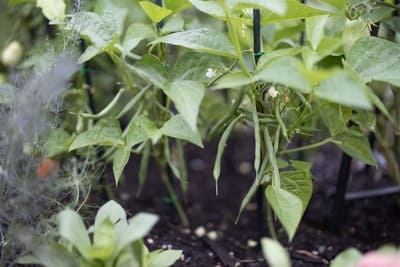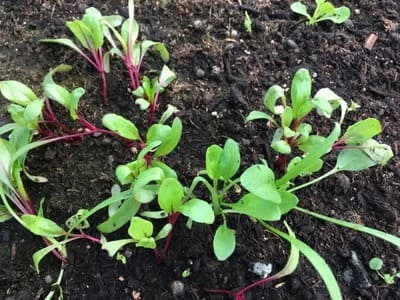Growing your food at home can be both rewarding and practical. If you’re aiming for a quick harvest, these ten fast-growing seeds can provide fresh, nutritious produce in as little as 30 days. Here’s a detailed guide on how to grow them, along with tips to maximize your success.
1. Radishes
 Radishes are among the fastest-growing vegetables, perfect for beginners and small gardens. They’re ready to harvest in 20-30 days.
Radishes are among the fastest-growing vegetables, perfect for beginners and small gardens. They’re ready to harvest in 20-30 days.
How to Grow:
- Soil: Loose, well-draining soil enriched with compost.
- Planting: Sow seeds ½ inch deep and 1 inch apart in rows.
- Water: Keep the soil consistently moist but not soggy.
- Light: Full sun to partial shade.
Tips: Harvest promptly when mature to avoid a woody texture. Try succession planting for a continuous supply.
2. Lettuce
 Lettuce is easy to grow and can be harvested as baby leaves in 25 days.
Lettuce is easy to grow and can be harvested as baby leaves in 25 days.
How to Grow:
- Soil: Well-draining, rich in organic matter.
- Planting: Scatter seeds on the surface and lightly cover them. Thin seedlings to 4-6 inches apart.
- Water: Regular, light watering to keep the soil moist.
- Light: Partial shade to full sun.
Tips: Use a cut-and-come-again approach to harvest outer leaves while allowing the plant to continue growing.
3. Spinach

Spinach thrives in cool weather and can be harvested within 30 days.
How to Grow:
- Soil: Fertile, well-drained soil with a slightly acidic pH (6.5-7).
- Planting: Sow seeds ½ inch deep and 2-3 inches apart.
- Water: Water regularly; avoid letting the soil dry out.
- Light: Prefers partial shade in warmer climates.
Tips: Harvest young leaves for tender salads, and mulch to maintain soil temperature.
4. Green Onions
 Green onions are versatile and regrow quickly after harvesting. They’re ready in 20-30 days.
Green onions are versatile and regrow quickly after harvesting. They’re ready in 20-30 days.
How to Grow:
- Soil: Loamy, nutrient-rich soil with good drainage.
- Planting: Sow seeds 1 inch apart or transplant bulbs.
- Water: Keep the soil evenly moist.
- Light: Full sun to partial shade.
Tips: Continuously snip the green tops to encourage further growth.
5. Microgreens

Packed with nutrients, microgreens are ready for harvest in 7-14 days.
How to Grow:
- Soil: Use seed-starting mix in shallow trays.
- Planting: Scatter seeds densely and mist with water.
- Water: Mist daily to keep the soil moist.
- Light: Bright, indirect light.
Tips: Rotate trays to ensure even growth, and harvest within 7-14 days when the first true leaves appear.
6. Arugula

Arugula adds a peppery punch to dishes and grows quickly, maturing in 20-25 days.
How to Grow:
- Soil: Moist, fertile soil with good drainage.
- Planting: Sow seeds ¼ inch deep and 1 inch apart.
- Water: Regular watering, especially in dry conditions.
- Light: Full sun to partial shade.
Tips: Pick leaves when they are small for the best flavor. Avoid letting the plant bolt.
7. Bush Beans

Bush beans are productive and ready to harvest in about 30 days.
How to Grow:
- Soil: Well-drained, fertile soil.
- Planting: Sow seeds 1 inch deep and 3 inches apart.
- Water: Keep the soil evenly moist.
- Light: Full sun.
Tips: Use stakes or supports for added stability, and harvest when pods are tender.
8. Beets (Leaves)

Beet greens are edible and can be harvested within 25 days, making them a quick source of nutrition.
How to Grow:
- Soil: Loose, well-drained soil with a neutral pH.
- Planting: Sow seeds ½ inch deep and thin to 2-4 inches apart.
- Water: Water consistently to avoid stress.
- Light: Full sun to partial shade.
Tips: Harvest leaves early for salads. Thinned baby plants can also be consumed.
9. Cilantro

Cilantro is a fast-growing herb that matures in 20-30 days, perfect for garnishing.
How to Grow:
- Soil: Well-drained soil with a pH of 6-7.
- Planting: Sow seeds ¼ inch deep, spaced 6 inches apart.
- Water: Keep the soil evenly moist.
- Light: Full sun or partial shade in hot climates.
Tips: Pick leaves often to prevent the plant from bolting. For continuous supply, sow seeds every two weeks.
10. Turnip Greens

Turnip greens are ready to harvest within 25-30 days and are packed with nutrients.
How to Grow:
- Soil: Loamy, well-drained soil.
- Planting: Sow seeds ½ inch deep and thin to 4 inches apart.
- Water: Water regularly to keep the soil moist.
- Light: Full sun to partial shade.
Tips: Harvest leaves when young for the best flavor. Turnip greens grow best in cooler temperatures.
General Tips for Fast-Growing Crops:
- Start with Quality Seeds: Use fresh, high-quality seeds for better germination rates.
- Use Fertile Soil: Enrich your soil with organic compost to promote rapid growth.
- Water Consistently: Maintain consistent moisture levels without waterlogging the plants.
- Provide Adequate Light: Most crops need at least 4-6 hours of sunlight daily.
- Monitor Pests: Use natural remedies like neem oil to keep pests at bay.
Choosing fast-growing seeds is an excellent option for anyone looking to dive into gardening, whether you’re a beginner or a seasoned grower seeking quick results. These seeds offer a range of benefits that make them ideal for creating a productive and rewarding gardening experience.
1. Immediate Satisfaction for Beginners
Fast-growing seeds provide visible results within weeks, making them a perfect starting point for those new to gardening. Watching sprouts emerge and develop quickly can boost confidence and foster an ongoing interest in gardening. Unlike slow-maturing crops, these plants keep you motivated with their rapid progress, making the gardening journey more engaging.
2. Efficient Use of Space
Many of these quick-growing crops are compact and thrive in small spaces, such as pots, containers, or vertical gardens. This makes them ideal for urban gardeners or those with limited outdoor areas. Whether you have a sunny windowsill, a balcony, or a small backyard, fast-growing seeds let you maximize your available space while cultivating a variety of produce.
3. Enhanced Freshness and Nutrition
Homegrown produce has a significant advantage over store-bought options in terms of freshness and nutritional value. Fast-growing vegetables, herbs, and greens can go from seed to table in just a few weeks, allowing you to enjoy peak freshness. They’re free from preservatives and unnecessary handling, making them healthier and tastier additions to your meals.
4. Low Maintenance and Cost-Effective
These crops often require minimal maintenance, making them budget-friendly for those just starting out or looking to garden on a tight schedule. Their shorter growing cycles mean fewer chances for pests or diseases to take hold, reducing the need for expensive treatments or excessive care.
5. Sustainable and Eco-Friendly
Growing your food—even on a small scale—can significantly reduce your carbon footprint. With fast-growing seeds, you can quickly replace store-bought produce, cutting down on packaging waste and transportation emissions. Additionally, these crops encourage sustainable gardening practices by enabling multiple harvests throughout the year.
6. Versatile for Any Climate
Many fast-growing seeds are adaptable to various climates and growing conditions. They can thrive indoors, in greenhouses, or outdoors, giving gardeners the flexibility to grow fresh food regardless of weather or season.
Fast-growing seeds combine speed, simplicity, and sustainability, making them an appealing choice for gardeners of all skill levels. Whether you’re cultivating a lush balcony garden or filling your plate with homegrown greens, these seeds provide a gratifying and efficient way to enjoy the benefits of gardening.

